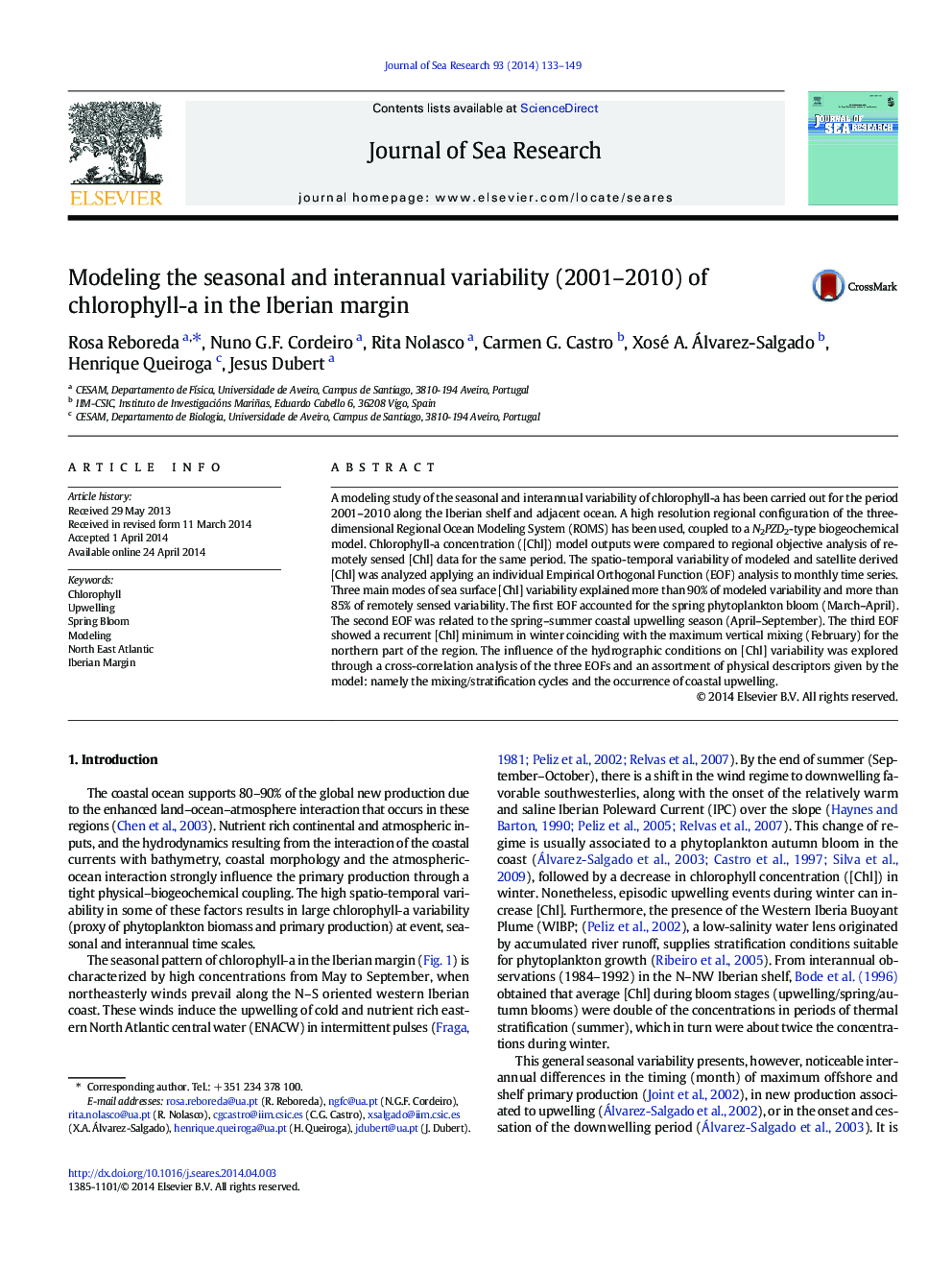| Article ID | Journal | Published Year | Pages | File Type |
|---|---|---|---|---|
| 4549715 | Journal of Sea Research | 2014 | 17 Pages |
•A 3D ocean-biogeochemical model has been implemented to the Iberian margin.•The model satisfactorily reproduced the [Chl] variability for the decade 2001–2010.•More than 90% of modeled and more than 85% of satellite variability were explained.•The spring bloom alone explained 69% of modeled (46% of satellite) variability.•The N–S opposite influence of the MLD evolution suggested two production regimes.
A modeling study of the seasonal and interannual variability of chlorophyll-a has been carried out for the period 2001–2010 along the Iberian shelf and adjacent ocean. A high resolution regional configuration of the three-dimensional Regional Ocean Modeling System (ROMS) has been used, coupled to a N2PZD2-type biogeochemical model. Chlorophyll-a concentration ([Chl]) model outputs were compared to regional objective analysis of remotely sensed [Chl] data for the same period. The spatio-temporal variability of modeled and satellite derived [Chl] was analyzed applying an individual Empirical Orthogonal Function (EOF) analysis to monthly time series. Three main modes of sea surface [Chl] variability explained more than 90% of modeled variability and more than 85% of remotely sensed variability. The first EOF accounted for the spring phytoplankton bloom (March–April). The second EOF was related to the spring–summer coastal upwelling season (April–September). The third EOF showed a recurrent [Chl] minimum in winter coinciding with the maximum vertical mixing (February) for the northern part of the region. The influence of the hydrographic conditions on [Chl] variability was explored through a cross-correlation analysis of the three EOFs and an assortment of physical descriptors given by the model: namely the mixing/stratification cycles and the occurrence of coastal upwelling.
